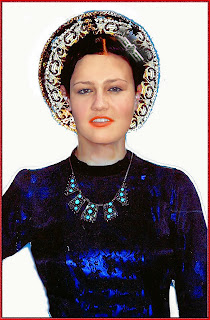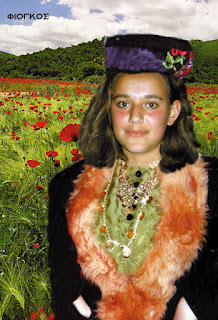Diurpaneus
Banned
- Messages
- 249
- Reaction score
- 21
- Points
- 0
- Location
- Bărăgan
- Ethnic group
- Thraco-Roman
- Y-DNA haplogroup
- Argeș(~SER+MAC)
- mtDNA haplogroup
- Walati(Vlachs)
Follow along with the video below to see how to install our site as a web app on your home screen.

Note: This feature currently requires accessing the site using the built-in Safari browser.
but the most beautifull sonf about migration, I think is from South Italy, at half Italian half Greek,
I do not know who composed it, it is common song at S Italy
it is from Greek TV show
Antra mou paei at Greek means
my husband has gone, went away, but also has the meaning of my husband is lost
wake up women, cause st Bricio day has passed, and we stay alone,
cause our men, one by one they leave us,
come on children and kneel, cause our father has left,
and we pray, to send a little bit of light for us,
much later after 70's become a hit at Greece with a more moarning or protest tone, according performer.
https://www.youtube.com/watch?v=xR_AsNq6iKo
that kind of music is conected with moiroloi, moarning songs, as at America had the blues, and in stronger forms used to cry, especially at funerals
This is the version with which I'm familiar:
https://www.youtube.com/watch?v=LcFhvsbRqnk
The words and music were written by Franko Corliano. There's more about it here:
https://greeksongstories.wordpress.com/2012/03/10/the-hidden-greece/
I take an interest in this music partly because it's beautiful, and partly because my husband's people only stopped speaking Griko about a hundred and fifty years ago.

It looks like some Eastern Roman/Byzantine paces,that's my very amateurish opinion.
The style,with its countless variations, probably implies Roman,Greek and Paleo-Balkanic features with a South-Slavic addition.
The Bulgarian dance really rocks,it is very similar to some of ours( esp.the paces);that's no sursprising since it's from a western and mountaineous region.
It's not only about the paces,it's the emotional intensity involved in these extremely fast dances that
really astonishes.
For the Greek,Albanian,Serb,Macedonian,Bulgarian,Romanian, or North-Carpathian peasant,dance was everything,
was more than everything,the hyperbolization of his life,of his community.
This looks like a line,but,it isn't;it's our ethnic DNA.
But I can reach much faster and honest to the source of true: for the Balkanians, dance is more than a drug,
not only that they constantly needed,it has to be fast,intense,improvised,and longlasting.
watch the pace:
PS
I see you're more into opera nowadays.


Diurpaneus, congratulations.
For me, Carpathian region from Romania to Southern Poland has been fascinating with costumes, dances, musics etc., in the picture Southern Polish dance:
But let's post a much better video:
The freestyle doesn't look that bad,does it?
I definitely enjoy the Vlach ballet that starts at 1:30,powered by opinca,the dancers from Split
could have been engaged in similar movements.
https://en.wikipedia.org/wiki/File:Valerio_-_Musiciens_Morlaques_(Salone),_1864.jpg
Diurpaneus, congratulations.
For me, Carpathian region from Romania to Southern Poland has been fascinating with costumes, dances, musics etc., in the picture Southern Polish dance:
But let's post a much better video:
The freestyle doesn't look that bad,does it?
I definitely enjoy the Vlach ballet that starts at 1:30,powered by opinca,the dancers from Split
could have been engaged in similar movements.
https://en.wikipedia.org/wiki/File:Valerio_-_Musiciens_Morlaques_(Salone),_1864.jpg
It occurred to me that people might more easily be able to find videos of this kind of folk music if you started a thread in the European music section. There's already one there for Italian folk music, and it would be a welcome addition. Just a suggestion.
Diurpaneus, congratulations.
For me, Carpathian region from Romania to Southern Poland has been fascinating with costumes, dances, musics etc., in the picture Southern Polish dance:
But let's post a much better video:
The freestyle doesn't look that bad,does it?
I definitely enjoy the Vlach ballet that starts at 1:30,powered by opinca,the dancers from Split
could have been engaged in similar movements.
https://en.wikipedia.org/wiki/File:Valerio_-_Musiciens_Morlaques_(Salone),_1864.jpg
I wonder as watching the video if i was watching Balkanic music, or Irish dancers,
Perhaps it is connected with old Europe or IEs who might have spread from Easter Europe. Here is a look at spanish 16 century fashion. White shirt, vest and surprisingly similar hat.I wonder as watching the video if i was watching Balkanic music, or Irish dancers,


This thread has been viewed 1197467 times.
